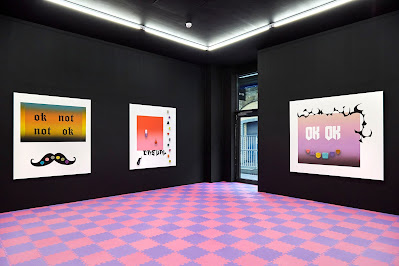I'm not touching, I'm feeling
My love language is touch. The idea of a 'love language', essentially codifying how one receives love, seems now to be widely known and, as with speech, you can have multiple love languages. I'm the sort of person who doesn't need to be around people all the time, but the language, and weighted meaning, of touch is incredibly important to me, whether it is cocooning with someone or just small moments of appreciation and union. I mention this because over the past year, this integral part of myself has been forcibly removed. Of course I am not alone in this, and for many people outside of the nuclear, married, cohabiting family or relationship setup, touch is now this mythical, elusive thing.
The title of this piece is from the wicked Tirzah track 'I'm Not Dancing'; it's powerful, it's funky, it's a bit gritty. The line "I'm not touching, I'm feeling" made me think about how those two words are often interchangeable, but when touch is removed from our lives, how does the way we feel, and process emotion, change? In terms of joy and contemporary art, the two things this blog focuses on, my expectations and desires of what I want from the art viewing experience have certainly shifted. Whilst I maintain that the 'white cube'-style exhibition space has its place (the hill of 'DOWN WITH THE WHITE CUBE' is not one I will be dying on), I want to feel a deeper connection to the environment in which I am choosing to spend time. At surface level, maybe this means a more profound engagement with the senses; this doesn't mean adding excessive lighting or even smells to exhibitions without context or need. Excitingly, this also does not mean one singular thing, so I suppose it is a challenge to artists, curators and galleries: how can you make your project worth the wait? I am really looking forward to seeing art in the flesh again, but I am even more excited for my heart to glow from a meaningful engagement with a work, or even with an exhibition design. The latter I have experienced a few times with Deptford-based Castor Gallery; they now have a reputation for constructing (and I use this word mindfully) exhibitions that cleverly capitalise on being 'Instagrammable', while being executed to an excellent standard. Their 2019 exhibition of Derek Mainella's work pictured below is one example.
Now we think about engaging with the senses, and factor in this universal lack of touch leading to an increased demand, how might a gallery respond to this? From a young age, visiting museums, galleries, even shops, we are told to look but not touch, and of course, the sense of touch is sacred even in regular times; we are not touching everything or everyone we see. But now that this craving for intimacy is ironically something of an epidemic in itself, I am starting to think about artworks I would love to squeeze or stroke or pinch. An exhibition which opened very briefly before the UK's most recent lockdown is 'Losing Touch' at Gerald Moore Gallery, which looks specifically at materiality and its processes. 'Losing Touch' is an interesting play on words here, as this time has been incredibly testing for relationships of all kinds, whether that is informalised or even newly-formed caring roles, the strain of working and living in the same spot as your partner 24/7, not being able to see them at all, etc. etc. Under this framework, touch becomes more of an emotional state and loses some of its physicality, but here I am very much concerned with physical touch, the type a baby literally needs to survive when it is born. The three artists included in Gerald Moore Gallery's show (Lily German, Sebastian Sochan and Alice Hartley) each have works filled with texture, craft and intriguing shapes. I look forward to visiting when it opens again.
The thing about the tactile and textured in art is it's not always appealing, at least not in a pleasurable way. Some artworks are 3D, jagged and sharp, yet they still present a calling to be near them. I think here of Kira Freije's work, which depicts fragmented bodies, often using metal. They are so recognisable and familiar, yet their metal bone-like structure without human detail is now bizarrely foreboding to a world without touch.





